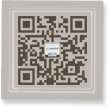- 中文
- EN
- Français
- 日本語
- 한국어
- 繁體中文
National Museum of Classic Books Opens Its Door
Surrounded by shelves and shelves of books, it is hard to tell if you are in a library or museum when you step into the National Museum of Classic Books, which was just opened in Beijing.
The 11,549 square-meter exhibition space, established by the National Library of China, is the country's first public museum that focuses on ancient classic books. "Ancient classic books are historical accounts of China's civilization throughout thousands of years," said Han Yongjin, director of the NLC.
"The combination of museum and library is an inevitable trend. Characters from these ancient books have to be kept alive. Our readers will also get new experiences," he said.
According to Han, the museum is home to 2.75 million copies of ancient classics, published before 1911. They include metal and stone rubbings, rare books and old maps.
The opening exhibition featured 800 of the collection's most precious items.
The museum opened on Sept. 9, which was the 105th anniversary of the NLC.
"It was difficult to choose 800 pieces from the huge collection," said Chen Hongyan, deputy head of the ancient books department of the NLC, and also the curator of the opening exhibition.
Chen said the library has royal book collections from all the dynasties since the Southern Song Dynasty (1127-1279).
"We would like to give a clear outline of literary history for the audience and more specific categories that take into consideration the value of the books as both as cultural relics and historical recordings," she said.
Chen said a highlight was a partial manuscript of a Zizhi Tongjian, or Comprehensive Mirror to Aid in Government, a curial reference work in Chinese historiography.
The single piece of paper has 400 characters written by historian and politician Sima Guang (1019-86) plus numerous critics' postscripts from later dynasties and is the world's only remaining manuscript of this milestone in historiography.
The world's largest oracle bone script written on ox scapulae and rare carvings of the country's top calligraphers were also on display.
The biggest hall in the museum houses 260,000 rubbing pieces and 35,651 oracle bones.
Chen said classics written in non-Han languages were also on display and included Tangut script and Old Uygur alphabets, extinct writing systems from the west of China.
Li Honglin, deputy head of the museum, said although all the items in the opening exhibition were owned by the NLC, he hoped future collections would include items from other institutions worldwide.
Li said the museum would focus on interacting with visitors through the use of new media.
"I have seen many exhibitions on oracle bone scripts and stone rubbings in China, but they generally contained too much information and jargon, which is not easy for the public to understand.
"However, if we teach the audience to make their own rubbings and create interesting but informative topics on salons or lectures, different results will come," Li said.



